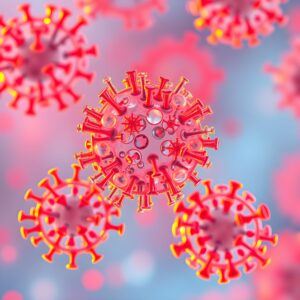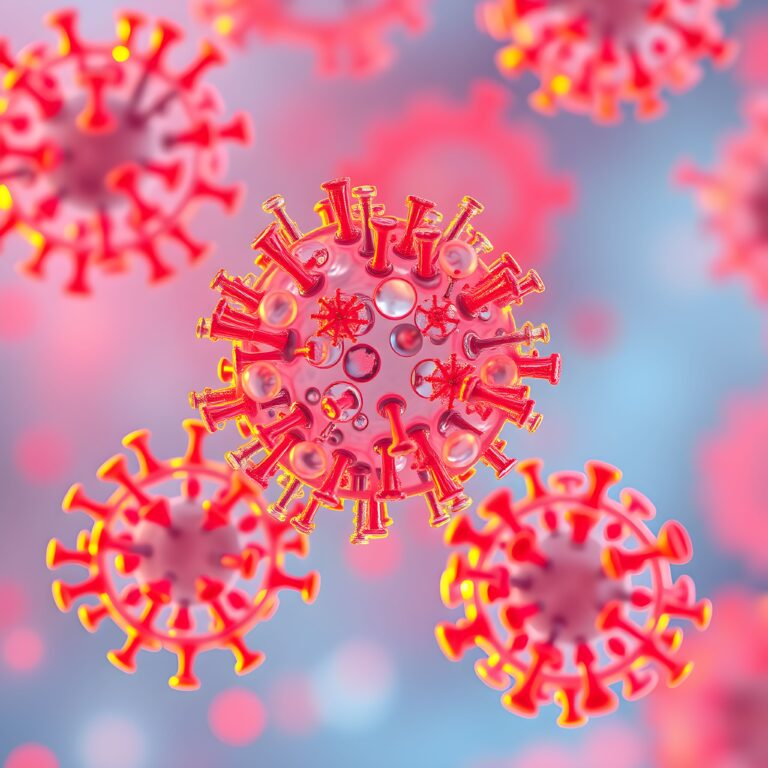As winter progresses into January 2025, the U.S. and several other countries have seen a significant uptick in cases of the stomach bug, commonly known as norovirus. This highly contagious viral infection is the leading cause of gastroenteritis, affecting millions of people each year. If you’ve found yourself or others in your household battling nausea, vomiting, diarrhea, and stomach pain, you are not alone. Norovirus is rampant this season, spreading rapidly in schools, offices, and even cruise ships.
So, why is this stomach bug more prevalent right now? What factors contribute to its swift spread, and how can you protect yourself? This comprehensive article delves into the reasons behind the current surge of norovirus infections, the symptoms associated with it, and most importantly, practical measures to prevent further transmission. By the end of this article, you will have a clear understanding of the virus and the best ways to keep yourself and your loved ones safe.
Understanding Norovirus: The Stomach Bug
Norovirus is a highly contagious virus that causes gastroenteritis, an inflammation of the stomach and intestines. This viral infection leads to symptoms such as nausea, vomiting, diarrhea, stomach cramps, and sometimes fever. Infected individuals typically experience sudden onset of symptoms, which can be very severe for the first 24 to 48 hours but usually subside within a few days.
Norovirus is responsible for up to 50% of all gastroenteritis cases in the U.S. annually, according to the Centers for Disease Control and Prevention (CDC). It is often called the “stomach flu” due to its flu-like symptoms, but unlike the flu, which primarily affects the respiratory system, norovirus affects the gastrointestinal tract.
This virus spreads rapidly because it is highly contagious. A single infected person can shed billions of viral particles through vomiting or diarrhea, contaminating food, surfaces, and even the air in enclosed spaces. It takes very few viral particles to cause infection, making norovirus one of the most contagious viruses known.
The main routes of transmission include contaminated food or water, especially in settings like restaurants, nursing homes, schools, or hospitals. It can also spread through contact with contaminated surfaces or person-to-person interaction. As little as a few particles of vomit or stool from an infected person can lead to a new infection, which makes it challenging to control outbreaks once they begin.
Norovirus is also known for its ability to survive on surfaces for extended periods—sometimes up to several days—especially in colder conditions. This characteristic contributes to its ability to spread quickly in indoor environments during the winter months, when people tend to congregate in close quarters.
The virus’s resilience and ease of transmission are key factors in the current surge of stomach bug cases in early 2025.
Why the Stomach Bug Is So Widespread Right Now
The rise in norovirus cases can be attributed to several factors, many of which are tied to the unique circumstances of winter 2025. Here are the main reasons behind the current surge:
-
Seasonal Increase in Norovirus Activity
Norovirus is known to be more active during the winter months. The colder weather encourages people to stay indoors, where the virus can spread more easily in crowded spaces. Additionally, low temperatures help the virus survive longer on surfaces, increasing the risk of contact transmission. Outbreaks are more common from November through April, coinciding with the flu season and the winter holiday period when people are more likely to gather indoors. -
Holiday Travel and Gatherings
The holiday season, with its increased travel and social gatherings, provides a perfect environment for the spread of norovirus. During this time, large groups of people often congregate in small, enclosed spaces, whether at family gatherings, office parties, or public events. The higher density of people increases the likelihood of the virus being passed from one person to another, especially when people are less vigilant about hygiene due to the festive atmosphere. -
Changes in Social Behavior Post-Pandemic
Following the COVID-19 pandemic, people have gradually returned to pre-pandemic social behaviors. While the pandemic led to strict hygiene practices such as frequent handwashing and mask-wearing, many of these behaviors have waned as restrictions have lifted. The shift away from these precautionary measures has left individuals more vulnerable to common viruses like norovirus. -
Increased Awareness but Reduced Vigilance
Although there is greater awareness of infectious diseases and hygiene practices today, the vigilance around personal hygiene has decreased in the post-pandemic period. Fewer people may be washing their hands regularly, disinfecting frequently touched surfaces, or staying home when they’re sick. This decline in vigilance, combined with the rise in socializing, contributes to the rapid transmission of the virus. -
Cross-Contamination in Public Spaces
Public spaces like schools, offices, cruise ships, and hospitals are prime locations for the spread of norovirus. These environments often host large numbers of people who interact with shared objects and spaces. Norovirus can survive on doorknobs, light switches, counter surfaces, and in restrooms for hours or even days. Contamination in these shared spaces makes it nearly impossible to avoid exposure, especially in high-traffic areas like schools and public transit systems. -
Reduced Immunity to Common Infections
A decrease in exposure to common viruses during the COVID-19 pandemic may have weakened the population’s overall immunity to infections like norovirus. During lockdowns, fewer people came into contact with the virus, and their immune systems had less opportunity to develop natural resistance. This makes the population more susceptible to a wide range of pathogens, including norovirus. -
Environmental Conditions Favoring Viral Transmission
Environmental conditions such as cold, dry air help norovirus thrive. Cold weather forces people to rely on indoor heating systems, which can dry out mucous membranes and make individuals more susceptible to infections. Additionally, the lack of humidity in the air during winter allows the virus to survive for longer periods on surfaces and in the air.
Symptoms of Norovirus Infection
The symptoms of norovirus infection can develop rapidly and are often severe for a short period. Here are the most common symptoms:
-
Nausea and Vomiting
Most people infected with norovirus experience nausea, which is often followed by vomiting. This can be intense, with some people vomiting multiple times within a short period. -
Diarrhea
Diarrhea is another hallmark symptom of norovirus infection. It is typically watery and may last for up to three days. Severe diarrhea can lead to dehydration, particularly in young children and the elderly. -
Abdominal Cramps and Pain
Individuals infected with norovirus often report stomach cramps or pain that can be sharp or crampy in nature. This discomfort is a result of inflammation in the intestines. -
Low-Grade Fever
Some people with norovirus may develop a mild fever, usually below 101°F (38°C), which is typically accompanied by chills and general body aches. -
Fatigue and Malaise
Fatigue and general weakness are common after a norovirus infection. This can make it difficult to perform everyday activities, even after the worst of the symptoms have passed. -
Duration of Symptoms
Most people recover from norovirus infection within one to three days. Although symptoms can be intense, they typically resolve without lasting effects. However, dehydration is a serious risk, especially for vulnerable populations, such as infants, elderly adults, and those with weakened immune systems.
Preventing the Spread of Norovirus
While norovirus is highly contagious, there are several steps that can be taken to reduce the risk of infection. These measures are especially important during times of high transmission, like the winter season:
-
Hand Hygiene
Hand hygiene is one of the most effective ways to prevent norovirus infection. Hands should be washed thoroughly with soap and water, scrubbing for at least 20 seconds, especially after using the restroom and before eating or preparing food. If soap and water are not available, alcohol-based hand sanitizers can be used, though they are less effective against norovirus than washing with soap and water. -
Disinfecting Surfaces
Regularly cleaning and disinfecting frequently touched surfaces, such as doorknobs, light switches, countertops, and remote controls, is crucial in preventing the virus from spreading. Use a disinfectant that is effective against norovirus, and be sure to clean these surfaces regularly, particularly in shared spaces. -
Avoiding Contact with Infected Individuals
Norovirus spreads easily from person to person, so if someone in your household or workplace is sick, avoid close contact with them. Infected individuals should stay home from work or school until at least 48 hours after their symptoms have ended to avoid infecting others. -
Safe Food Handling
Ensuring that food is cooked to the appropriate temperature and practicing good hygiene when preparing meals can help prevent foodborne transmission of norovirus. Always wash hands before handling food and use separate utensils for raw and cooked items to avoid cross-contamination. -
Staying Hydrated
Staying hydrated is critical during a norovirus infection, as dehydration is a common complication, especially for vulnerable populations. Drink fluids such as water, clear broths, and oral rehydration solutions to maintain fluid balance. Avoid sugary, caffeinated, or alcoholic beverages, as these can further dehydrate the body. -
Staying Home When Sick
If you are sick with symptoms of norovirus, stay home from work or school to avoid infecting others. It is important to stay home until at least 48 hours after symptoms have subsided, as this is when individuals are most contagious. -
Avoiding Contaminated Water and Food
Be cautious of consuming food or drinks that may be contaminated with norovirus. Avoid eating raw shellfish or consuming food from unverified sources, especially if outbreaks have been reported in the area. -
Monitoring Vulnerable Populations
Pay special attention to elderly individuals, infants, and people with weakened immune systems. These groups are at a higher risk for severe dehydration and complications from norovirus infection. Seek medical advice if symptoms worsen or if there are signs of dehydration, such as dry mouth, dizziness, or decreased urination.
The winter of 2025 has brought with it an alarming surge in norovirus cases, making it essential for individuals to understand the reasons behind the spread of this stomach bug and the steps that can be taken to protect themselves. The combination of seasonal factors, increased social interactions during the holidays, and lapses in hygiene practices has created the ideal conditions for norovirus to thrive.
Visit our other website:master3dp.com












